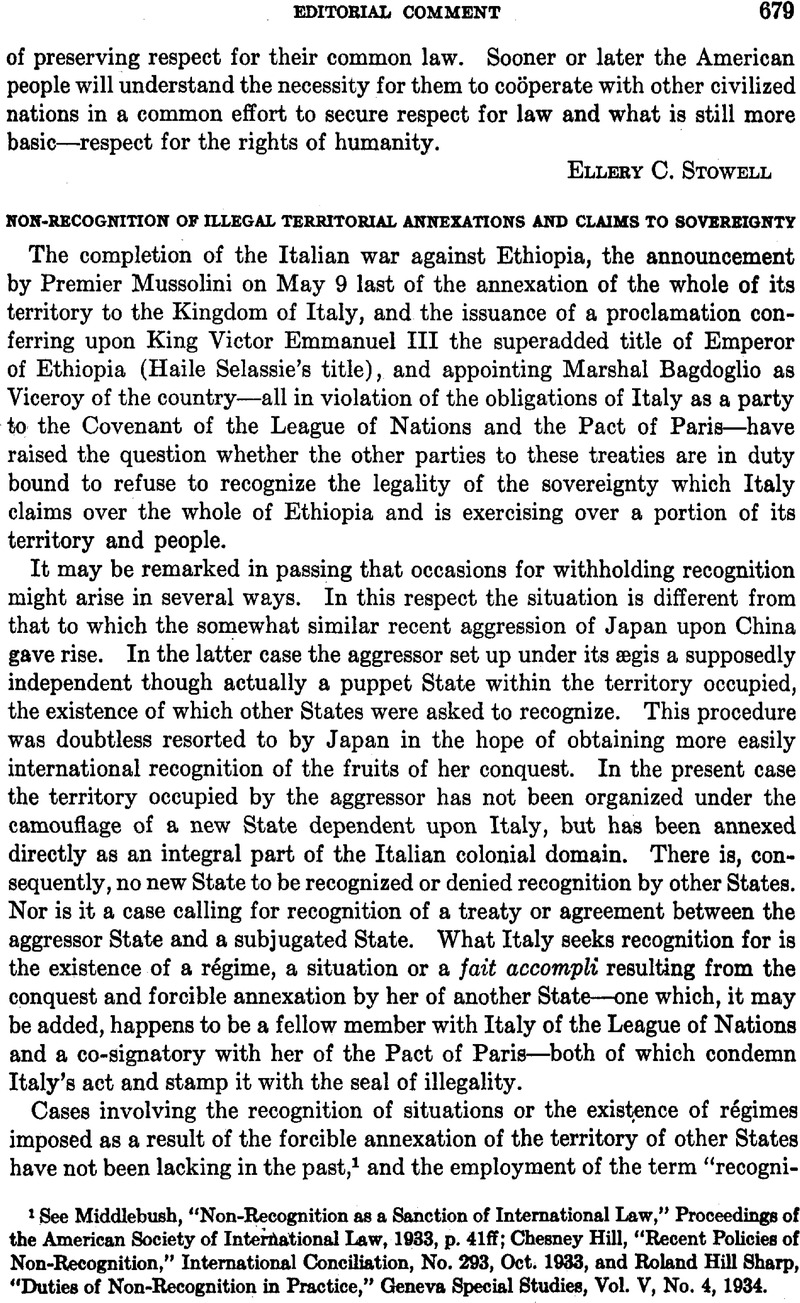No CrossRef data available.
Published online by Cambridge University Press: 12 April 2017

1 See Middlebush, “Non-Recognition as a Sanction of International Law,” Proceedings of the American Society of Inteitational Law, 1933, p. 41ff; Chesney Hill, “Recent Policies ofNon-Recognition, ” International Conciliation, No. 293, Oct. 1933, and Roland Hill Sharp, “Duties of Non-Recognition in Practice,” Geneva Special Studies, Vol. V, No. 4, 1934.
2 Compare Sir J. F. Williams, “La Doctrine de la Reconnaissance en Droit International et sea Developpements Resents,” Remelt des Cours, Academie de Droit International, 1933, Pt.II, p. 201.
3 McNair, “The Stimson Doctrine of Non-Recognition,” British Year Book of International Law, 1933, p. 66.
4 Compare SirWilliams, J. F., “Some Thoughts on the Doctrine of Recognition in International Law,” 47 Harvard Law Review (1934), p. 780.Google Scholar
5 See as to this the Statement of M. Procope, Official Journal, League of Nations, 1928, Spl. Supp. No. 64, p. 75.
6 New York Times, July 3, 1936,
7 International Law Association Report, 1934, p. 6.
8 Compare Sir Williams, J. F., “Some Thoughts on the Doctrine of Recognition in International Law,” 47 Harvard Law Review (1934), p. 788.Google Scholar
9 New York Times, Aug. 4, 1932, p. 9.
10 New York Times, Jan. 18, 1933, p. 1.
11 Compare Yuen-li Liang, “Challenges to the Doctrine of Non-Recognition,” The China Quarterly, September,1935, p. 13ff.
12 “The Stimson Doctrine of Non-Recognition—A Note on its Legal Aspects,” British Year Book of International Law, 1933, p. 73.Google Scholar
13 See, for example, the British Memorandum of Aug. 13, 1887, addressed to the Government of Portugal. 2 Hertslet’s Map of Africa by Treaty, p. 706.
14 Garner, >International Law and the World War, Vol. I, p. 51.